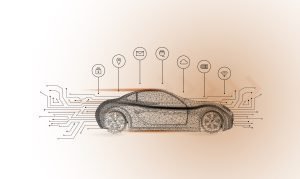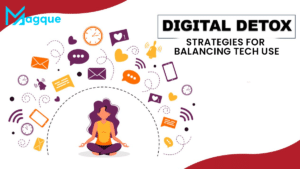In the ever-evolving landscape of artificial intelligence and voice assistant technology, Google has made significant strides in 2023. With the integration of cutting-edge AI capabilities, Google Assistant has taken a giant leap forward by gaining the ability to “see” and “hear.” This article will delve into the exciting developments in Google Assistant’s functionality and explore how these advancements are reshaping our digital interactions.
Table of Contents
- Introduction
- The Evolution of Google Assistant
- Vision Augmentation
- Understanding Images
- Image-Based Searches
- Visual Assistance
- Auditory Enhancement
- Voice Recognition Advancements
- Audio Context Understanding
- Enhanced Multilingual Support
- Seamless Integration
- Smart Homes
- In-Car Experience
- Wearable Tech
- Privacy Concerns and Safeguards
- User Experience and Feedback
- Future Prospects
- Conclusion
- Frequently Asked Questions (FAQs)
Introduction
In recent years, Google Assistant has been at the forefront of voice assistant technology, continually pushing the boundaries of what AI can do. In 2023, Google has introduced groundbreaking advancements that enable Google Assistant to perceive and interact with the world in a more profound way than ever before.
The Evolution of Google Assistant
Google Assistant has come a long way since its inception. Originally designed as a voice-activated search tool, it has evolved into a multifaceted digital companion. Its journey to “seeing” and “hearing” has been a gradual process of innovation and development.
Vision Augmentation
Understanding Images
One of the most remarkable advancements is Google Assistant’s newfound ability to understand images. Users can now simply show their phone’s camera to a flower, a landmark, or a foreign menu, and Google Assistant will provide real-time information, including translations, historical facts, and more.
Image-Based Searches
Google Assistant’s image recognition technology has also extended to image-based searches. By taking a photo or uploading an image, users can initiate a search, finding similar products, identifying objects, or discovering more about a specific subject.
Visual Assistance
For users with visual impairments, Google Assistant’s visual assistance capabilities are life-changing. It can provide detailed descriptions of the user’s surroundings, assist with navigation, and even read text from images.
Auditory Enhancement
Voice Recognition Advancements
Google Assistant’s voice recognition technology has become eerily accurate, thanks to AI advancements. It can now distinguish between multiple users’ voices within a household and tailor responses accordingly.
Audio Context Understanding
Understanding context in audio conversations is another milestone. Google Assistant can process complex discussions, identify the topic, and provide relevant information or insights seamlessly.
Enhanced Multilingual Support
Language barriers are no longer a hindrance. With improved multilingual support, Google Assistant can effortlessly switch between languages, making it more accessible and versatile than ever.
Seamless Integration
Smart Homes
Google Assistant’s integration with smart home devices has become smoother. Users can control lights, thermostats, security systems, and more with simple voice commands.
In-Car Experience
In 2023, Google Assistant is the ultimate co-pilot. It can assist with navigation, play music, and even order food, all while keeping the driver’s eyes on the road.
Wearable Tech
Wearable devices are now seamlessly connected to Google Assistant. From smartwatches to AR glasses, users can access the assistant wherever they go.
Privacy Concerns and Safeguards
While these advancements are exciting, they also raise concerns about privacy. Google has implemented robust privacy settings to ensure user data remains secure. Users have granular control over what Google Assistant can access and retain.
User Experience and Feedback
Google values user feedback and continuously refines Google Assistant based on user input. This iterative approach ensures that the assistant evolves to meet user expectations and demands.
Future Prospects
The future of Google Assistant is promising. With ongoing developments in AI and machine learning, we can expect even more impressive features and capabilities in the coming years.
Conclusion
Google Assistant’s newfound ability to “see” and “hear” in 2023 represents a significant leap in AI-driven voice assistant technology. These advancements have transformed how we interact with digital assistants, making them more intuitive and versatile than ever before. Visit Here :- Can You Swim With The Google Pixel Watch 2
Frequently Asked Questions (FAQs)
What is Google Assistant’s new Capability to “see” and “Hear”?
Google Assistant in 2023 has gained the ability to understand images and audio, allowing it to provide visual and auditory assistance to users.How Accurate is Google Assistant’s Image Recognition Technology?
Google Assistant’s image recognition is remarkably accurate, making it proficient in identifying objects, landmarks, and even reading text from images.Can Google Assistant Switch Between Languages Seamlessly?
Yes, Google Assistant now offers enhanced multilingual support, allowing it to switch between languages effortlessly to cater to a diverse user base.Are there Privacy Concerns with Google Assistant’s new Capabilities?
Google has implemented robust privacy settings to address concerns, giving users control over their data and what the assistant can access.What can we Expect From Google Assistant in the Future?
The future of Google Assistant holds exciting possibilities, with ongoing developments in AI and machine learning, promising more advanced features and capabilities.












